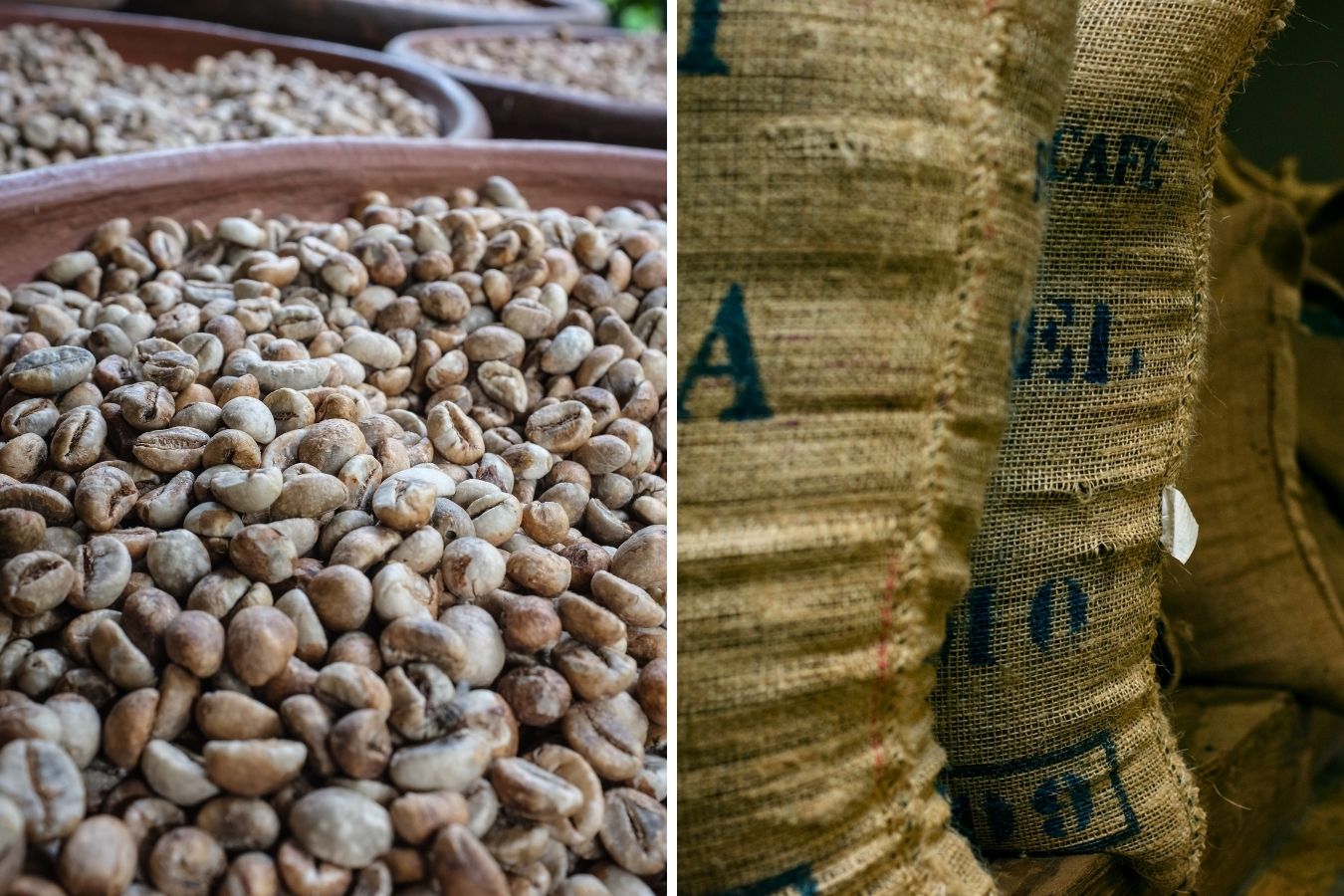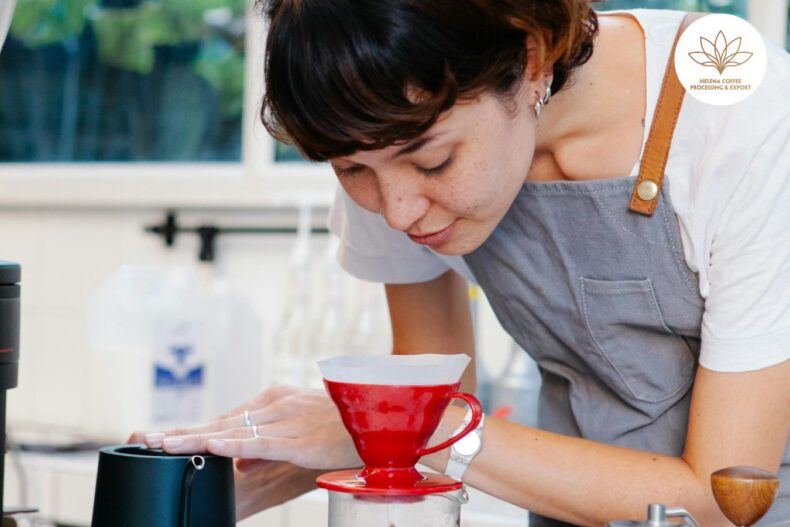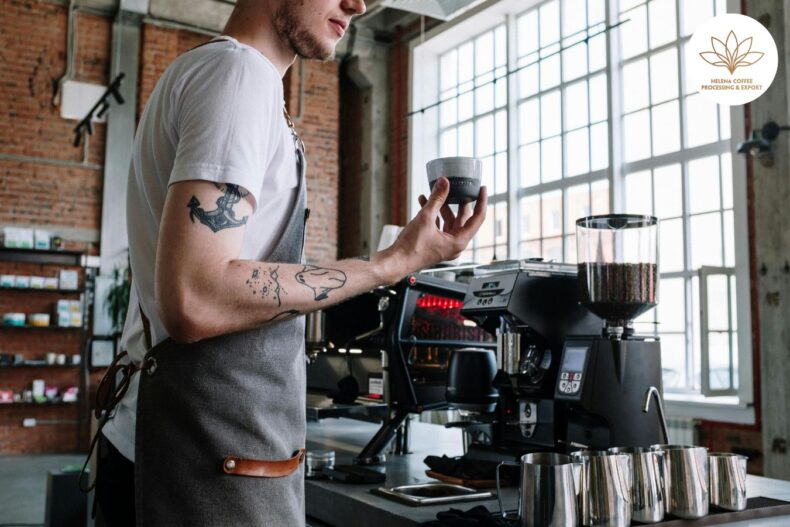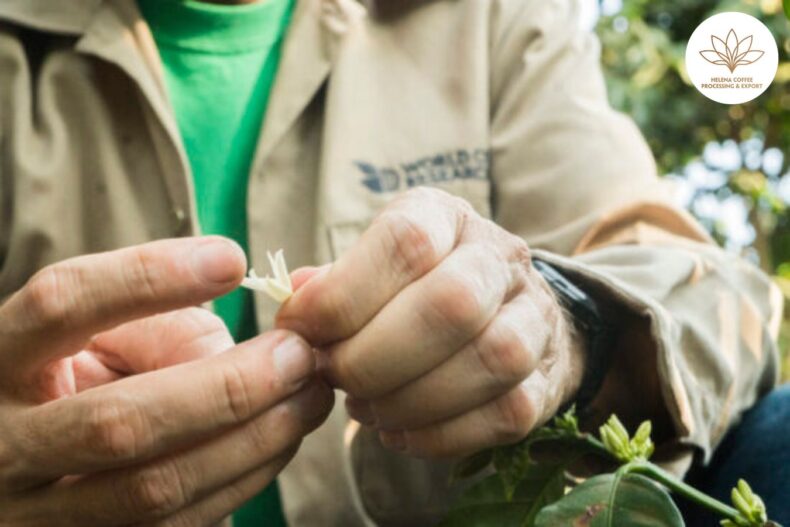
The Difference Between Specialty and Commercial Coffee: We have learned about the definition of the difference between specialty coffee and premium coffee. What are the necessary and sufficient conditions for coffee to be classified as “prestige.
However, depending on the intended use, the value of commercial coffee is equally important. We will try to compare the differences between these two types to choose the right one for you.
Coffee is classified as either specialty or commercial quality. Specialty coffees make up the majority of the coffees discussed on this page. The most obvious distinction between commercial and specialty coffees from the consumer’s perspective is the packaging:
Commercial coffee is sold in small instant bottles or as ground coffee in a tin or a collapsed, plastic-encased brick. Specialty coffee is stored or delivered whole beans in one-pound bags or in bulk and must be ground before use.
Commercial coffee is often roasted and packaged in huge factories under well-known brand names. Specialty coffee is typically roasted in tiny shops or factories utilizing traditional methods and technology, and it is frequently sold right where it is roasted.
Specialty coffees have a far wider range of options than commercial coffees. Coffee can be purchased by the country of origin (Kenya, Colombia), roast (French roast, Italian roast), or blend (made for the time of day, price, or flavor). Commercial coffee shops provide a small selection of blends and roasts, with minimal opportunity to purchase single-origin, unblended coffees.
Commercial coffees are facts accomplished in tins or bags, whereas specialty coffee markets allow customers to participate in the production of their pleasure.
Different standards of Specialty Coffee beans and Commercial Coffee
Method specialty coffee
Preferences specialty coffee
– Specialty Coffee (Premium Coffee): Must meet the screening conditions of SCA (World Specialty Coffee Association) for quality in each stage. From cultivation, preliminary processing, roasting, and preservation to preparation. Specialty coffee private
– Commercial Coffee: There is no specific standard of quality.
Characteristic breed
Premium Coffee, or specialty coffee beans, only uses tea varieties (Arabica) green coffee for the high-end segment (taste score above 80). Arabica is selected for its superiority in flavor. And its caffeine content is less than that of bean robusta beans.
These premium Arabica varieties are generally more selective. Requiring growing conditions is more labor-intensive because it meets the standards needed for green seed quality.
However, the output is not high; it changes according to the season, not throughout the year. In contrast, Commercial coffee differences are often more focused on the economy and general tastes.
Commercial coffees are usually lower-grade Arabica varieties—usually a blend of Arabica and Robusta or completely Robusta. The output of Commercial coffee is relatively stable. Always maintain a sustainable supply as required by major brands and brands.
Difference transparency of the origin
One of the advantages of premium specialty coffee is highlighting the unique local flavors of each region. So for this segment, you can trace the whole farm, not simply the country of production.
Besides, information such as variety, planting height, soil type, cultivation, preliminary processing, and roasting level… are all essential. The target customers of this segment are looking for the experience, knowledge, and stories that local coffee brings.
Therefore, the requirements for product transparency are very high; the more detailed the information, the more clearly the level of the coffee is shown.
For Commercial coffee, the origin information of the coffee is often much more straightforward. The reason is that the product is a mixture of many seed varieties of different origins and qualities.
Usually, Commercial Coffee only has basic information such as various appropriate brewing tools. This market share often views coffee as a refreshment product to keep them awake.
The difference between Roast Level and Freshness
Specialty Coffee is best when medium-roasted and when fresh
A difference between commercial
The trend of specialty coffee roasting (Superior coffee, hand specialty coffee, pre-ground specialty coffee) pursues the honor of the unique, indigenous flavor of the coffee. The third wave “particularly favors” roasts from medium to bright.
You know, the darker the roast, the more the original flavors of the coffee fade, giving way to the bitter taste of the old style. Roasting of the third wave is also considered a separate art school because of coffee’s flavor transformation during this period.
This premium product is best used within a month of roasting. Doing so to ensure freshness, ensure the taste of coffee.
Commercial Coffee suitable for dark roast taste
This variety has uneven quality, so light roasting will quickly reveal errors in the seeds. Usually, to fill in the defects, roasters will roast from dark to dark. In addition, they also marinate more flavors to increase the appeal to users.
Producer companies also often extend the shelf life of coffee after one to two years of roasting. This will reduce costs and even increase profits. Although in theory, coffee can still be used after a year. But now, the taste of the coffee will be terrible.
The convenience of Commercial Coffee and Specialty Coffee
Of course, in terms of comfort, Commercial coffee will be much better. Due to the sophisticated nature of Specialty Coffee, it is almost more difficult to access and find reputable sources. Sometimes to buy, you need to book online or find reliable roasters.
If you want to buy green kernels, the shipping can take more than a month. This affects the quality of the coffee. And if you buy roasted beans, you should pay attention to the roasting date to ensure the freshest product…
At the same time, enjoying Specialty Coffee is also more expensive in terms of enjoyment. You can go to the store to buy and drink directly. Or, if you are “more willing to play,” invest in a “luxury” mixing kit at home.
More simply, with Commercial Coffee, you can easily buy it at supermarkets and grocery stores with all brands and different prices. They are usually sold in ground powder soluble powder to serve customers’ convenience needs.
The audience of this market share is often more interested in convenience and price. In particular, some types are also marinated with flavorings to increase their competitiveness in terms of tastes.
The difference in Price (words)
The selective nature and requirements from the stages of Specialty Coffee are more demanding. Therefore, labor costs and storage and transportation costs make the average price of Specialty Coffee much higher than that of Commercial Coffee.
According to the latest statistics, a kilogram of roasted premium coffee beans can range from $35 to $65 (equivalent to 800,000vnd – 1,500,000vnd) ( difference). In addition, due to limited output and high demand, the price of Specialty Coffee through auctions has been raised to a new “level.” Typical can be said for the Panama Geisha, with the cost can be up to 1000 $ / 1 kg of green seeds.
In contrast, there is no set price for Commercial Coffee. Because of the competitive nature of this segment. Depending on the needs of use, consumers can buy at different prices. Usually as low as $5 for a kilo of roasted, blended coffee (Blend) kd.
The different target market of Specialty Coffee and Commercial Coffee
Premium Coffee is a product mainly served at Specialty Coffee Shops. With the “identity” of this product, customers are looking for high-quality coffee beans because of the store’s service style. They want an experience that is all-encompassing and perfect for enjoyment.
This market mainly consists of coffee “nerds” or coffee lovers who have a passion for discovering, learning, learning, and finding inspiration. And because it is a unique coffee, the way to drink it is also very typical.
You can buy this product line through online sites, at your local roaster, or at a specialty coffee shop. Usually, to preserve the best flavor, you should purchase whole seeds and use them within 3-6 months after roasting. However, the perfect taste is to enjoy it within one month after roasting.
Commercial Coffee is widely used in many of the distinctions between segments. The food and beverage business model, from shops, and big brands, in food–cooking… to individuals due to its high profitability, popularity, and stability.
The different value of the two types of coffee to the coffee industry
Commercial Coffee often spreads quickly coffee culture to the community in terms of advantages. Typically thanks to large coffee brands, factories, trading companies, etc. In particular, the volume of product consumption has remained at the same growth rate ever.
Although coffee is still only seen as a popular beverage in this segment. But thanks to the extremely high profits worldwide; Specifically, the average annual coffee industry earns more than 33 billion dollars in profits. And the fact is the financial source of many countries’ raw materials.
If Commercial Coffee plays the role of “keep warm,” Specialty Coffee (Premium) “keeps the enthusiasm” for us. Specialty Coffee is a milestone for all those involved in the supply chain to work together toward a high-quality standard ( Difference).
The common ideal of bringing prosperity to the coffee-enjoying culture beyond the boundaries of subsistence. To get the highest values to the spiritual life. That value is for everyone, from the producer to the seller and the beneficiary.
Conclude (old)
The development of the coffee industry, regardless of the segment, is a resonance combination and creates conditions for other industries to develop in parallel. As coffee makers, we are in an era of spectacular coffee development. The period when all elements of science, culture, and art stood together towards high-quality coffee.
Commercial coffee vs. specialty coffee, as expected, outperforms commercial coffee in terms of taste and aroma. Taking into account a variety of circumstances, it turns out to be a better option – though not in all cases – to purchase specialty coffee.
Commercial coffee, on the other hand, is very handy, and the low price is a big reason why people keep buying it. Furthermore, commercial coffee contains a higher percentage of caffeine, which, while it might cause acid reflux and heartburn, is the only reason people drink coffee.
Fortunately, specialty coffee’s popularity is at an all-time high. This is not only better for our palates, as we now have a larger selection of specialty coffee to choose from, but it also benefits the coffee industry, as more money goes to growers who would otherwise be unable to make a living due to undercutting. Specialty coffee is good for the world’s coffee supply while also being delicious.
Related Posts:
- Espresso coffee from basic to perfect
- History Of Instant Coffee
- Arabica Bourbon Coffee And How Is It Grown In Vietnam?
FAQ: in the specialty, the difference between, back, contact, vs commercial coffee, reviews


